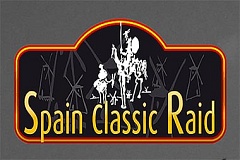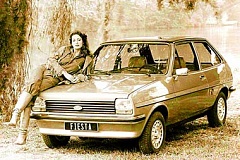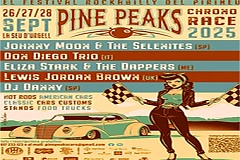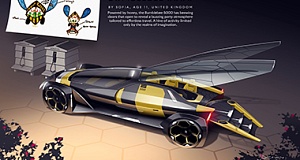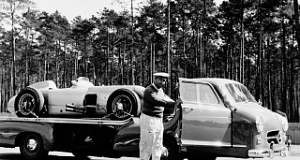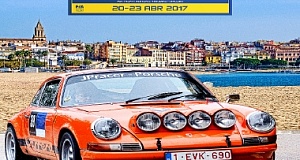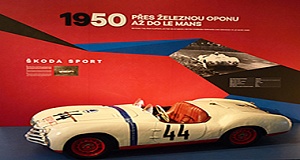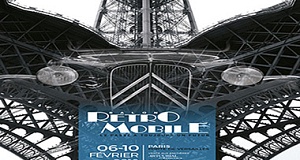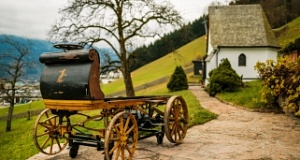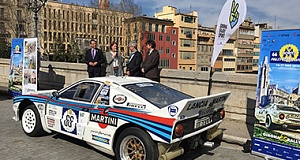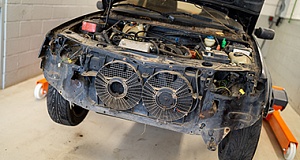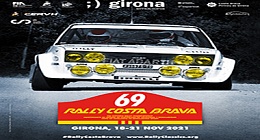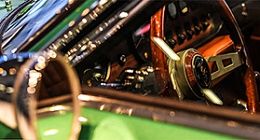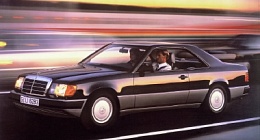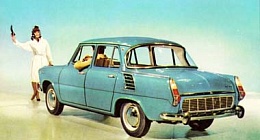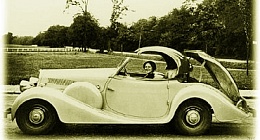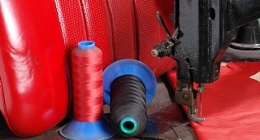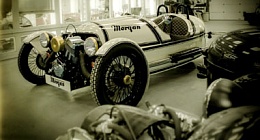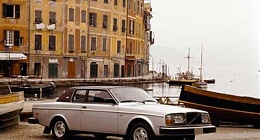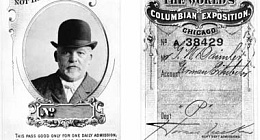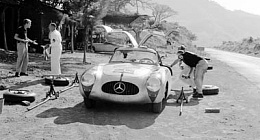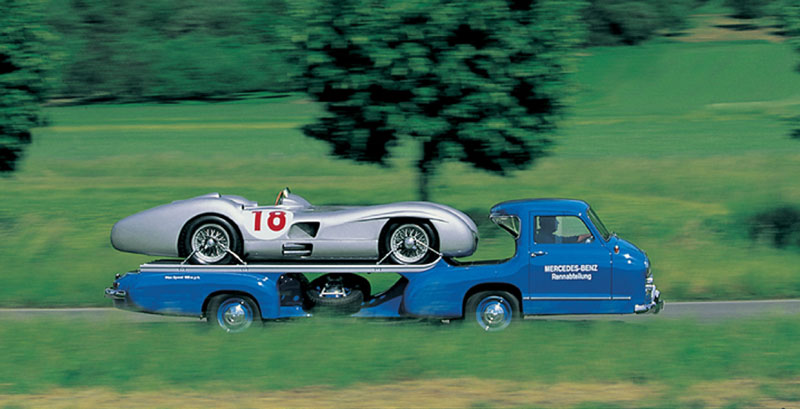 La historia de Mercedes-Benz comenzó con el nacimiento del automóvil hace 125 años - un aniversario que se celebra con varios eventos este año.
La historia de Mercedes-Benz comenzó con el nacimiento del automóvil hace 125 años - un aniversario que se celebra con varios eventos este año.
"Mercedes-Benz Classic está marcando lo que fue un momento decisivo tanto en la historia de la ingeniería y en el más amplio contexto social.
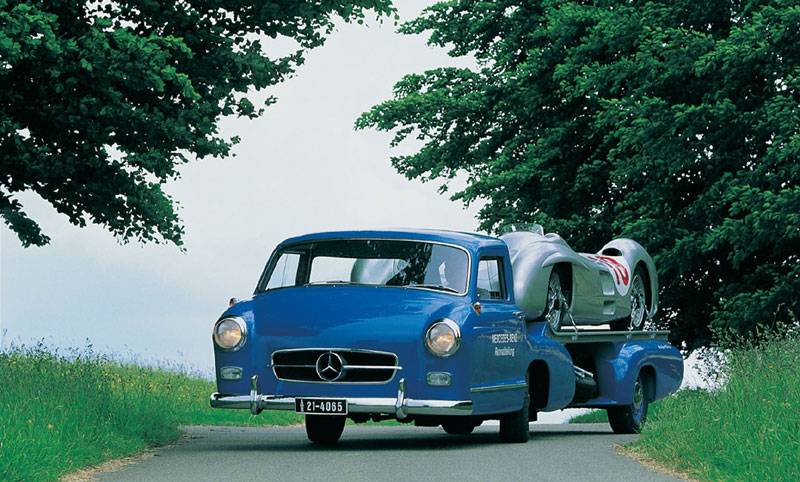 Un invento que sigue influyendo en el mundo hoy en día - como se demuestra en las Jornadas de Schloss Dyck Clásico 2011 ", señala Michael Bock, director de Mercedes-Benz Classic y Mercedes-Benz GmbH Museo, al que no le faltaron alagos para la familia del creador:
Un invento que sigue influyendo en el mundo hoy en día - como se demuestra en las Jornadas de Schloss Dyck Clásico 2011 ", señala Michael Bock, director de Mercedes-Benz Classic y Mercedes-Benz GmbH Museo, al que no le faltaron alagos para la familia del creador:
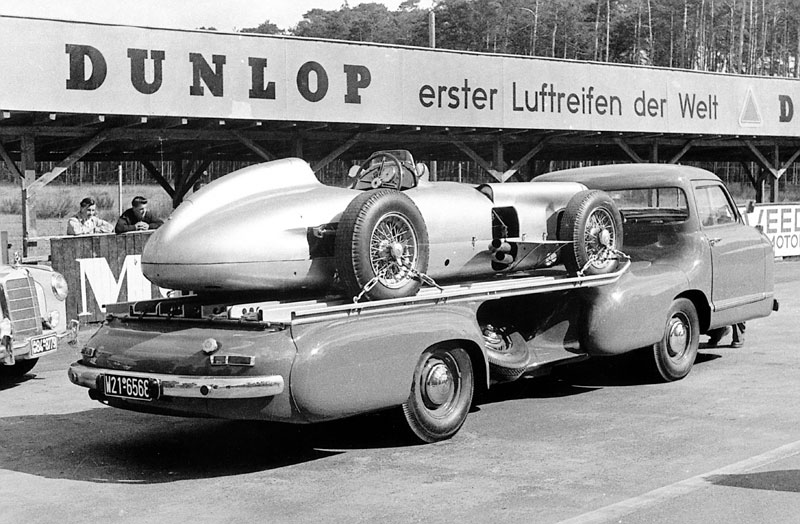 " Estoy particularmente encantado de que Jutta Benz, -nieta de Berta y Carl Benz esté presente en el evento en este año de aniversario. "El evento se llevará a cabo en Jüchen en el distrito del Rin de Neuss, el 6 y 7 de agosto de 2011.
" Estoy particularmente encantado de que Jutta Benz, -nieta de Berta y Carl Benz esté presente en el evento en este año de aniversario. "El evento se llevará a cabo en Jüchen en el distrito del Rin de Neuss, el 6 y 7 de agosto de 2011.
Vehículos presentes en la concentración:
Se concentrará una gran representación de vehículos Mercedes-Benz de todas las épocas,que han marcado la historia de la marca durante estos 125 años, destacando a los siguientes vehículos:
Mercedes-Benz 300 SLR (W 196 S), 1955 (mobile)
Mercedes-Benz Formula 1 W 196 racing car
Mercedes-Benz racing transporter, 1955
Mercedes-Benz W 196 R, 1954/1955 ( racing transporter)
Mercedes-Benz W 196 R Formula 1 de 1954
Mercedes-Benz SSK (model series W 06), 1928
Mercedes-Benz Model 500K
Mercedes Benz 300 SL “Gullwing
Mercedes-Benz 180 “Pontoon”
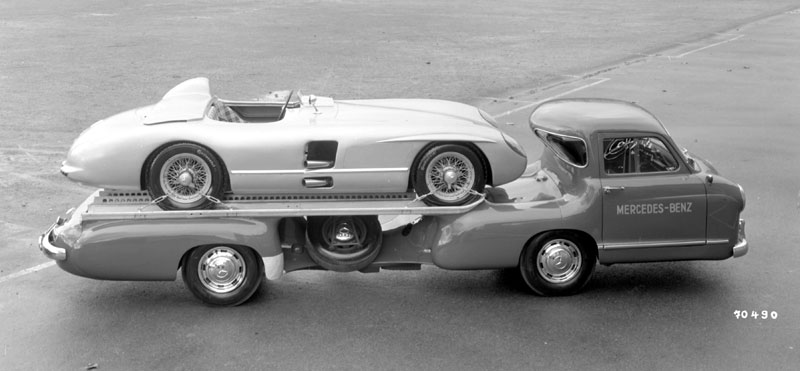 The history of Mercedes-Benz began with the birth of the automobile 125 years ago – an anniversary which is being celebrated at various events this year. “Mercedes-Benz Classic is marking what was a defining moment in the both the history of engineering and the broader social context.
The history of Mercedes-Benz began with the birth of the automobile 125 years ago – an anniversary which is being celebrated at various events this year. “Mercedes-Benz Classic is marking what was a defining moment in the both the history of engineering and the broader social context.
An invention that continues to influence the world to this day – as demonstrated at the Schloss Dyck Classic Days 2011”, notes Michael Bock, head of Mercedes-Benz Classic and Mercedes-Benz Museum GmbH.“I am particularly delighted that Jutta Benz, great-granddaughter of Bertha and Carl Benz will be attending the event in this anniversary year.” The event will take place in Jüchen in the Rhine district of Neuss on 6 and 7 August 2011.
Mercedes-Benz Classic will be celebrating the invention of the automobile at this event with an exhibition of automotive milestones from the company’s own collection. Another focus of the event is Juan Manuel Fangio, who would have celebrated his 100th birthday this year.
Born in Balcarce (Argentina) on 24 June 1911, racing driver and record world champion Juan Manuel Fangio shaped the era of the Mercedes-Benz Silver Arrows in 1954 and 1955. He won the Formula 1 world championship on both years, and was also successful in sports car racing.
Mercedes-Benz Classic will be reviving this era at Schloss Dyck with a presentation of Fangio’s two legendary Silver Arrows: the W 196 Grand Prix racing car, which will be exhibited on the famous Mercedes-Benz racing transporter that is also known as the “Blue Wonder”, and the 300 SLR racing sports car (model series W 196 S) with the starting number 658, which will also be doing the rounds on the circuit at Schloss Dyck.
Fangio contested the 1955 Mille Miglia in this vehicle. In contrast to most other drivers, he completed the race without a co-pilot, nevertheless taking second place behind his team-mate, Stirling Moss. The ‘658’ derives from his starting time of 6.58 a.m.
Mercedes-Benz Classic has also invited racing drivers Hans Herrmann and Jochen Mass to this top-class weekend devoted to automobile culture. The two will take turns driving this historic car at the Schloss Dyck Classic Days.
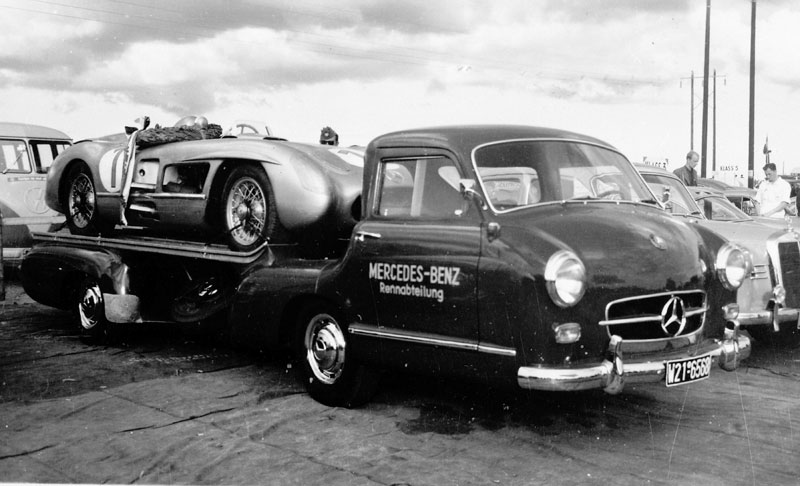 As part of the “125! years of the automobile” exhibition, Mercedes-Benz Classic will be showing milestones of automobile history at the Schlosspark which illustrate the brand’s unflagging innovative drive since 1886. The centrepiece will be Benz’s patented motor car from 1886 – the world’s first automobile. Also on show will be an SSK supercharged touring sports car, a Mercedes-Benz 500 K luxury roadster, a Mercedes-Benz 300 SL Coupé with its characteristic gull-wing doors, a pontoon-style saloon from the era of the ‘economic miracle’ and the stunning Mercedes-Benz 450 SEL 6.9. Finally, the cutting-edge B-Class F-CELL, recently returned from its circumnavigation of the globe on the “F-CELL World Drive” in June 2011, provides an insight into the future of automotive engineering and technology as a state-of-the-art automobile running on zero emissions.
As part of the “125! years of the automobile” exhibition, Mercedes-Benz Classic will be showing milestones of automobile history at the Schlosspark which illustrate the brand’s unflagging innovative drive since 1886. The centrepiece will be Benz’s patented motor car from 1886 – the world’s first automobile. Also on show will be an SSK supercharged touring sports car, a Mercedes-Benz 500 K luxury roadster, a Mercedes-Benz 300 SL Coupé with its characteristic gull-wing doors, a pontoon-style saloon from the era of the ‘economic miracle’ and the stunning Mercedes-Benz 450 SEL 6.9. Finally, the cutting-edge B-Class F-CELL, recently returned from its circumnavigation of the globe on the “F-CELL World Drive” in June 2011, provides an insight into the future of automotive engineering and technology as a state-of-the-art automobile running on zero emissions.
Mercedes-Benz Rhine-Ruhr will be providing an exclusive chauffeur service for the Classic Days from the branches in Düsseldorf, Duisburg, Krefeld, Mönchengladbach and Neuss, enabling classic car enthusiasts to arrive at one of the world’s leading classic car events in consummate style. To underscore the character of the Classic Days as a family occasion, Mercedes-Benz Rhine-Ruhr director Jürgen Herrmann has been keen to assist the Schloss Dyck foundation in organising the event by providing an additional shuttle service.

“Organising such a festival calls for mobility. We are happy to help the foundation by providing eight Mercedes-Benz vehicles from our branch,” he says.
Launched in 2006, the Schloss Dyck Classic Days provide a perfect setting in which to present the fascinating history of Mercedes-Benz and its predecessor companies. The brand clubs will once again help to boost the event’s special appeal, presenting more than 200 vehicles at the Classic Days Schloss Dyck. The actual level of interest among the clubs was even greater – the number of inquiries in 2011 once again exceeded the capacity of the historical site surrounding the moated castle.
The Classic Days Schloss Dyck came into being in 2006 to commemorate racing driver Wolfgang Alexander Reichsgraf Berghe von Trips, who suffered a fatal accident in Monza in 1961. Von Trips contested sports car races in cars from Mercedes-Benz, while in Formula 1 he raced for Ferrari and Porsche. The “Count Trips Sculpture” by Pierre Habets also commemorates the legendary driver and is awarded to the overall winner of the Schloss Dyck Classic Days.
The Classic Days, which draw enthusiasts and collectors from all over Europe to the Rhineland with their exclusive vehicles, boasts a rich and varied agenda. The “Racing Legends” offer circuit races for historical competition vehicles built up to 1961. Motorcycles and car/trailer combinations dating from 1940 and earlier also race against the clock. These circuits combine with the demonstration trips on the almost three kilometre-long circuit around the moated castle and the 1/4-mile sprint competition over 402.36 metres to produce a kaleidoscope focusing on the highlights of classic motor racing which truly brings this special variant of automotive engineering to life.
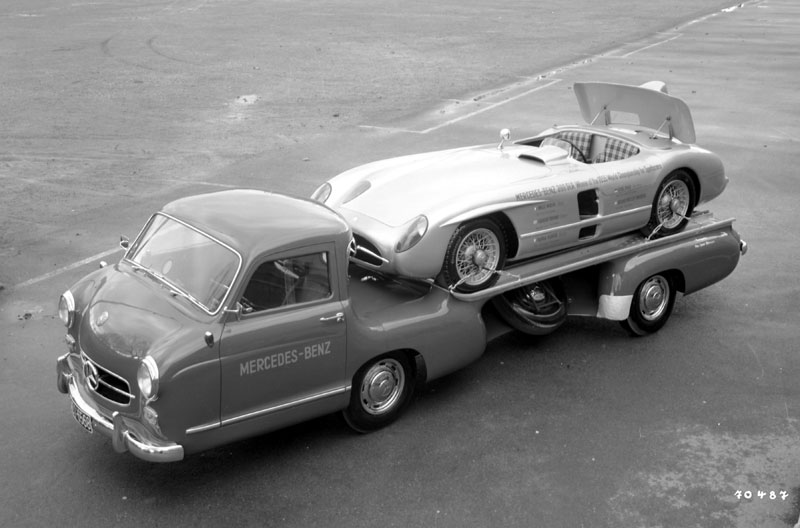
The action kicks off with racing and sports cars in the categories “Classic” (1910 to 1925), “Historic” (1926 to 1949) and “Modern” (1950 to 1961). There will also be special races under the banner “125 years of the automobile” for large-displacement, sporty vehicles from the beginnings of motorsport spanning the period from 1905 to 1920, for monoposti used in Formula racing which date from the years between 1930 and 1961 and “Great British Marques” for vehicles from Riley, Lagonda, Bentley, Alvis, Invicta and Sunbeam built between 1925 and 1950.
The second dazzling highlight of the festival will once again be the “Concours d’Elegance at Schloss Dyck - “Jewels in the Park”. This presentation of vehicles has received a category A rating as a top event from FIVA once again – on a par with the Villa d’Este and Pebble Beach. The presentation in front of the moated castle and at other unusual locations around the grounds of this site dating back to the 11th century is expected to draw a crowd of more than 40,000.
Various special exhibitions and themed presentations will round off the programme of events at the Schloss Dyck Classic Days. One such special item on the agenda will be the presentation of classic vehicles at the Miscanthus Field – named after the decorative Chinese reed grass which grows there – which will be transformed for two days into a vast open-air museum presenting the history of the automobile, with many hundreds of vehicles on show.
The vehicles from Mercedes-Benz at the Schloss Dyck Classic Days 2011
Mercedes-Benz 300 SLR (W 196 S), 1955 (mobile)
Mercedes-Benz won the sports car world championship with the 300 SLR in 1955. This sports car is essentially a Formula 1 W 196 racing car provided with a two-seater racing car body – but with a three-litre eight-cylinder in-line engine in light alloy instead of the 2.5-litre Formula 1 engine with steel cylinders. Rated at 300 hp (221 kW), the 300 SLR outperformed its rivals, scooping double victories in the Mille Miglia, the Eifel Race, the Swedish Grand Prix and the Targa Florio. In winning the Mille Miglia, Stirling Moss and co-driver Denis Jenkinson clocked up an average speed of 157.65 km/h – a feat that remains unsurpassed to this day. A useful aid in this race was the “prayer book” – a new type of itinerary with crucial notes which Jenkinson drew up to guide driver Moss around the course. Juan Manuel Fangio, competing without a co-driver, came in second. In Sweden and in the 24-hour Le Mans race the 300 SLRs caused a surprise with the so-called air brake – a panel measuring 0.7 square metres in size which the driver could open up over the rear axle to boost the braking effect. In Le Mans, Mercedes-Benz withdrew the 300 SLR following an accident suffered by Belgian driver Pierre Levegh through no fault of his own while he was in the leading position.
Mercedes-Benz racing transporter, 1955
It was not only the legendary Silver Arrows that caused a stir in the early 1950s. Mercedes-Benz also made its mark away from the actual race track with the “world’s fastest racing transporter”. Race manager Alfred Neubauer was inspired to develop this special-purpose vehicle by the racing car transporter based on a large Mercedes touring car which was built in 1924. The racing transporter was required to be fast – very fast, together with its load, in the form of a Grand Prix racing car or an SLR racing sports car.
The X-type tubular frame forming the basis of the vehicle originated from the 300 S model, while the powerful engine came from the 300 SL. The racing transporter’s designers also used parts from the 180 model. The end result was a technically unique vehicle sporting a correspondingly distinctive appearance, with a wheelbase of 3050 mm and a top speed of 160 to 170 km/h, according to payload.
The high-speed transporter was ready for service in 1955. The racing department deployed the vehicle first and foremost for special tasks – when a car needed to be transported to the race track quickly after final tuning or adjustments, or returned to the factory swiftly after a race in order to gain more time for repairs. The racing transporter became something of a sensation on Europe’s roads, attracting great popularity as it darted from race track to race track.
With the original vehicle no longer surviving, it was decided in 1993 to rebuild the one-off vehicle. Following seven years of meticulous work by the experts, the racing transporter was unveiled in all its former glory once again in 2001. It is on show at the Mercedes-Benz Museum with a 300 SLR (W 196 S) on its load surface.
Mercedes-Benz W 196 R, 1954/1955 (on racing transporter)
The Mercedes-Benz W 196 R Formula 1 racing car built for the 1954 season met all the requirements of the new Grand Prix formula defined by the CSI (Commission Sportive Internationale): displacement 750 cc with or 2500 cc without compressor, any fuel composition, racing distance 300 kilometres but at least three hours. The streamlined version was the first to be produced, as the opening race in Reims permitted very high speeds. A variant with free-standing wheels was subsequently produced. For its second season in 1955, this classic grand prix car was also available with shorter wheelbases: in addition to the 2350 millimetre long car from 1954, there were also variants with a wheelbase of 2150 and 2210 millimetres. The shortest variant was ideal for the narrow, winding circuit through Monaco. The space frame was light and robust, the chassis with torsion bar suspension and a new single-joint swing axle at the rear plus giant turbo-cooled duplex disc brakes which were initially fitted in an inside central position was as accomplished as it was unconventional. The car was powered by an eight-cylinder in-line engine (2496 cc) with direct injection and desmodromic (positive-controlled, without valve springs) valves (1954: 256 hp/188 kW at 8260 rpm, 1955: 290 hp/213 kW at 8500 rpm). The engine unit was mounted in the latticework frame at an incline of 53 degrees to the right, in order to lower the centre of gravity and to reduce the size of the frontal area. The top speed was over 300 km/h.
Benz’s patented motor car, 1886
Carl Benz filed a patent application for his “gas engine-powered vehicle” on 29 January 1886. Patent no.DRP 37.435 has since come to be regarded as the automobile’s ‘birth certificate’. The world’s first automobile was an original construction incorporating engine and chassis as an organic entity. Benz designed it as a three-wheel vehicle, as he was dubious about the drawbar steering which was customary on horse-drawn coaches. Carl Benz’s crucial contribution was the determination with which he realised his vision of a “carriage without horses”: he had the idea of a motor car, designed it, built it, had it patented, tested it, marketed it, put it into production and pursued its further development, thus rendering his invention usable. Benz’s patented motor car rang in a new era of individual mobility.
Mercedes-Benz SSK (model series W 06), 1928
The SSK (model series W 06) is the most exclusive and fascinating of the six-cylinder supercharged sports cars belonging to the Mercedes-Benz S-Series. The model designation is an abbreviated form of ‘super-sports-short’ in German, alluding to both the car’s special sportiness and its shortened wheelbase. In the summer of 1928, works racing driver Rudolf Caracciola won the Gabelbach, the Schauinsland and the Mont Ventoux races in the brand-new SSK at the first attempt. In 1930 and 1931 he won the European Hillclimbing Championship at the wheel of the SSK. The lighter and yet more powerful version from 1931, which was also known as the SSKL (German abbreviation for ‘super-sports-short-light’) also scored some spectacular victories, one of the most outstanding being in the legendary 1000-mile “Mille Miglia” race: driving the SSKL, Rudolf Caracciola was the first non-Italian to win the gruelling road race from Brescia to Rome and back in April 1931.
Mercedes-Benz 500 K Special Roadster (model series W 29), 1934
Mercedes-Benz’s eight-cylinder supercharged cars were positioned in the international luxury class in the 1930s. The “Model 500 with compressor”, or 500 K (model series
W 29) appeared in 1934 in eight different body variants: as a streamlined saloon described as a “Motorway Courier Car”, as a 4-door saloon which sold as a “Sedan”, as a cabriolet in three variants, as a 2-door open touring car and as a Roadster. The ultimate variant was the particularly elegant and luxurious Special Roadster, only 29 of which were ever built. The 500 K and its successor, the 540 K, acquired legendary status not only on account of their superlative power and performance, but also by virtue of their beguilingly attractive and high-quality bodies. With its tailor-made form and elegant flowing lines, the Sindelfingen-built body rose to benchmark status in the 1930s.
Mercedes-Benz 300 SL (model series W 198), 1954
The 300 SL “Gullwing” was unveiled in February 1954 at the International Motor Sport Show in New York. The high-performance sports car was based on the legendary racing sports car of the 1952 season. Engine, transmission and axles are mounted on a light, torsionally rigid space frame. As on the motor racing version, there is no room for conventional doors, and the gull-wing doors duly became the distinguishing feature of the 300 SL (model series W 198). The gull-wing model was an innovation flagship in other respects, too: it was the first standard production passenger car to be powered by a four-stroke engine with petrol injection. This boosted not only efficiency, but engine power, too. 215 hp (158 kW), 20 percent more than on the motor racing version fitted with carburettors, enabled a top speed of up to 250 km/h. This made the 300 SL the fastest production car of its day and the dream sports car of the 1950s.
Mercedes-Benz 180 “Pontoon” (model series W 120/121), 1955
The model 180 (W 120) from the Mercedes-Benz upper mid-range car programme set cutting-edge standards in terms of engineering and style when it was premiered in the autumn of 1953. A totally new development, this saloon was the first passenger car from the brand to feature a self-supporting body. The new model’s exterior design also reflected this structural design principle, the model 180 making its mark with its modern “pontoon” shape featuring a rectangular plan view and fully integrated wings. This body design entailed new advantages, including exemplary safety, reduced drag and a spacious interior – strengths which remain defining characteristics of the Mercedes-Benz E-Class to this day. Following the successful introduction of the petrol-engined model, Mercedes-Benz was quick to launch the 180 D diesel variant at the beginning of 1954. The more powerful model 190 was adopted into the programme as the third variant in 1956, with the 190 D making its appearance in 1958 (both model series W 121).
Mercedes-Benz 450 SEL 6.9 (model series W 116), 1980
The luxury segment series with which Mercedes-Benz had been setting automobile standards for decades acquired a name of its own in 1972. The new S-Class (model series W 116) boasted a comprehensive safety concept, along the same lines as the 350 SL sports car which had been presented in 1971. This concept included a tank installed above the rear axle to afford protection in the event of a collision, a four-spoke safety steering wheel, soiling-resistant side windows, large headlamps, striking indicator lamps and dirt-repellent ribbed tail lights. In 1975 the powerful and particularly comfortable 450 SEL 6.9 appeared as the new top-of-the-range model, featuring a large-displacement, high-output V8 engine (286 hp/210 kW) and hyropneumatic suspension. In 1978 the S-Class was the first production vehicle worldwide to be available with the ABS anti-lock brake system, ensuring that steering control was retained even during emergency braking. A global sensation at the time, thanks to Mercedes-Benz’s pioneering work ABS is now a standard feature of present-day automobiles.
Mercedes-Benz B-Class F-CELL (model series T 245), 2010
In 2020, the Mercedes-Benz B-Class F-CELL demonstrated that local emission-free mobility is already possible in day-to-day motoring. This vehicle produced in a small series is equipped with a fuel cell system of the very latest generation which converts hydrogen into electrical energy. A full tank of the gas compressed at 700 bar offers a range of around 400 kilometres. This range, good cold-start capability, short filling times at the hydrogen filling station and the impressive performance of the 100 kW (136 hp) electric motor offering 290 Newton metres of torque make the Mercedes-Benz B-Class F-CELL fully suitable for everyday use. The vehicle also offers exemplary safety and fuel consumption, the latter corresponding to only 3.3 litres of diesel per 100 kilometres. Customers in Germany and the USA began taking delivery of these environmentally friendly vehicles in 2010, initially on full service rental terms.
Mercedes-Benz sculpture “Aesthetics 125”, 2011
Dynamically flowing lines and bold, dynamic contours: the sculpture “Aesthetics 125” embodies the Mercedes-Benz design philosophy in abstract form. It was unveiled to the public at the ceremony held by Daimler AG on 29 January 2011 to mark the 125th birthday of the automobile. This work of art created by Mercedes-Benz designers incorporates elements of the brand’s signature design idiom from the exterior and the interior and projects them into the future. As such, “Aesthetics 125” stands for the maxim “Mercedes-Benz design is art” – similarly to the previously presented sculptures “Aesthetics No. 1” and “Aesthetics No. 2”. On a technical level, the imposing sculpture is firmly rooted in the present-day world of leading-edge automotive development at Mercedes-Benz, having been produced by means of “rapid prototyping”. This technology is employed by designers and development engineers to create three-dimensional models directly from digital designs produced on computers.
GALERIA
{gallery}news/mercedesdays11/galeria{/gallery}
